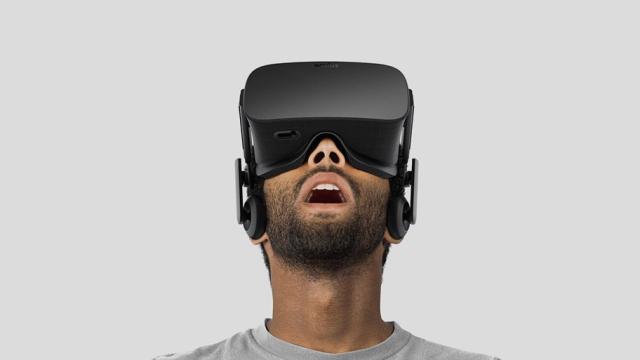Here are two questions an annoying friend or relative might ask you: “Does anyone actually watch esports tournaments?” and “Does anyone actually own a VR headset?”
Image via Oculus
A startup called SLIVER.tv has decided to combine these two head-scratchers into one bizarre business plan, which can be best summarised in one question: “Would anyone watch esports tournaments in VR?”
SLIVER.tv is a VR streaming platform that specifically shows esports tournaments — and that’s it. Their streams feature both VR views “inside” the game during matches, plus interspersed footage from 360° cameras placed in the tournament venue.
To me, it doesn’t seem like there would be enough overlap in the hyper-specific Venn diagram of esports fans and VR fans to justify founding a startup to meet this hypothetical need. And the statistics mostly back up my gut feeling.
As for whether anyone actually owns a VR headset, Viarbox reports that 92.5 million VR headsets shipped worldwide in 2016. 88.4 million of those headsets were Google Cardboard ones, which are the cheapest of the bunch.
92.5 million VR headsets is, admittedly, a bigger number than I thought it would be — but, again, 95 per cent of those are Google Cardboard headsets, and at least a couple million of those were sent out to people as part of Google’s various promotional deals. If you don’t count Google Cardboard, only 4.1 million VR headsets shipped last year. By way of comparison, 2.32 billion people are estimated to currently own smartphones.
So how many people watch esports tournaments? Last week, the Intel Extreme Masters released a record-breaking set of viewership numbers for their 2017 tournament in Katowice, Poland, which clocked in, per their claims, at 46 million unique online viewers. There were also 173,000 in-person audience members, and 340,000 unique viewers tuning in to the virtual reality broadcast.
In all, less than one per cent of IEM Katowice’s online viewers watched the tournament in VR.
Still, though, SLIVER.tv sounds confident. In the words of SLIVER.tv CEO Mitch Liu: “Esports and VR are a perfect match driven by the shared demographics: 15-30+ year olds, largely male audience. According to a Newzoo report, between 24% to 52% of occasional and esports enthusiasts are planning to purchase a VR product in the next 6-12 months, if not already.”
The gender demographics he’s citing aren’t, in fact, quite as cut and dried: Thirty eight per cent of esports enthusiasts are women. Still, it’s true that VR is more popular with dudes than ladies, so this whole “esports tournaments in VR” program will probably skew male. Maybe that explains why I don’t “get” it.
Bizarrely enough, this is one area in which traditional sports and esports are roughly on par with one another. The NBA started broadcasting one game a week in VR last October, and Fox Sports VR has done broadcasts of the 2016 MLS Cup and the Super Bowl. Fox’s screenshots of the Super Bowl VR experience look… very unnerving. The viewer sits in a cavernous and empty “game room”, complete with couches and virtual wall decorations, just in case watching the Super Bowl all alone while wearing your VR headset didn’t seem isolating enough.
Unlike watching sports, watching esports has always been a lonely affair, at least for me. The “social” aspect is the (sigh) interactive chat window on whatever streaming platform I’m on, which I tend to ignore. So, at least I wouldn’t be losing anything by watching esports in VR. But would I be gaining anything?
Mitch Liu says Yes (of course he does): “Our users are blown away by the unique 360 perspective of being ‘inside the game’, and it’s almost like giving them courtside seats or being inside the Counterstrike: Global Offensive and League of Legends maps. At the same time, at exciting critical moments of a match they love how we transition to the live-action stadium cameras to capture the energy and excitement of fans present in the stadium.”
I assume that second part only works if the stadium is actually packed at the esports tournament in question, which isn’t always the case. But, sure. I get the gist.
This whole concept seems like a pretty huge gamble on two very niche industries. Both VR and esports already have their own barriers to entry for the average person. But, hey, it probably does make more sense to market the watch-matches-in-VR concept to esports enthusiasts rather than traditional sports fans. Esports spectators are already used to people being confused and alienated about what we watch, so why not do it while ensconced in a VR mask?
…Nope. Still didn’t manage to convince myself. Sorry, VR evangelists, but I only have space in my repertoire for one alienating pastime, and going by those Katowice numbers, I seem to not be alone.

Comments
One response to “You Can Watch Esports In VR Now, But Why Would You?”
I feel like the venn diagram is a poor approach. It’s not just for people that like VR and esports, but the combination might attract one to the other. I’m sure there’s non-esports fans who’d get in to it simply to find another use for their VR headset and non-VR fans who’d get VR to be more immersed in their esports. And then there’s people who aren’t into either but might because of the novelty of the combination.